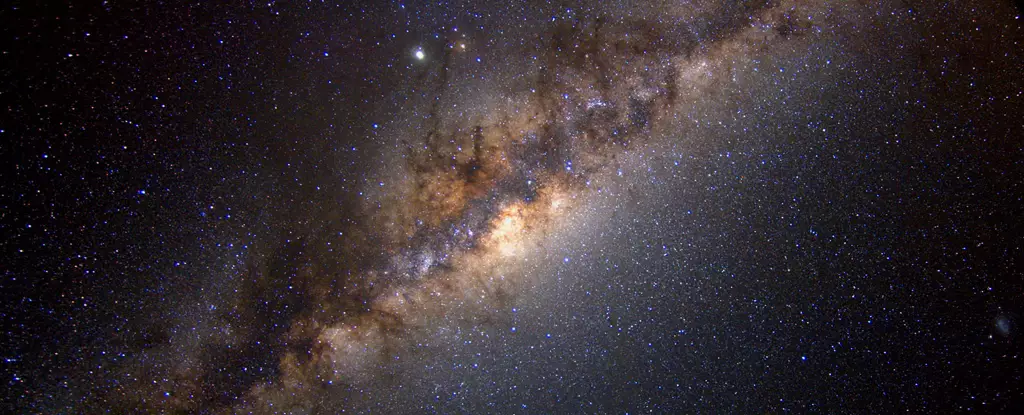Determining the mass of the Milky Way is no simple task. It can be likened to a single cell in your body trying to calculate your total mass- a daunting challenge to say the least. However, a recent study has managed to calculate an accurate mass for our galaxy, and the results are surprising. By examining the rotation curve of a galaxy, which involves measuring the speed of stars in relation to their distance from the galactic center, scientists can map the distribution of mass per radius and estimate the total mass of a galaxy. While nearby galaxies like Andromeda have had their rotation curves measured accurately, the task proves more difficult for the Milky Way due to the abundance of gas and dust obscuring our view. Nonetheless, by utilizing neutral hydrogen, scientists have obtained a rough estimation of our galaxy’s mass. Additionally, the motions of globular clusters in the Milky Way’s halo offer further insights. The prevailing estimate, based on these techniques, suggests that the Milky Way has a mass of around a trillion solar masses. However, a recent study using data from the Gaia spacecraft has challenged this estimate and proposed a new, lower mass for our galaxy.
The Gaia Spacecraft Data and Its Implications
The third data release of the Gaia spacecraft has provided scientists with a wealth of valuable information. With details on the positions and motions of over 1.8 billion stars, this dataset offers a unique opportunity to refine our understanding of the Milky Way. Although this number represents only a fraction of the estimated 100-400 billion stars in our galaxy, it is still sufficient to calculate a precise rotation curve. Taking advantage of this, the team behind the study rigorously analyzed the data and identified a characteristic known as the Keplerian decline in the rotation curve. The Keplerian decline refers to the outer region of the Milky Way, where the speeds of stars gradually decrease following Kepler’s laws. This decline is significant as it allows researchers to place an upper limit on the mass of our galaxy. Surprisingly, their analysis indicated a mass of approximately 200 billion solar masses, which is only a fifth of previous estimates. The absolute upper mass limit was determined to be 540 billion solar masses, meaning that the Milky Way is at least half as massive as previously thought. Furthermore, this revised mass estimation suggests that the amount of dark matter in our galaxy is significantly lower than previously believed.
The Implications of the New Mass Estimate
The revised mass estimate of the Milky Way has profound implications for our understanding of the universe. With substantially less dark matter than anticipated, this finding challenges current models describing the distribution of dark matter in galaxies. Dark matter, an elusive form of matter that does not interact with light, has long been postulated as the dominant component of galaxies, including the Milky Way. However, the lower mass estimate suggests that the ratio of regular matter to dark matter is much higher than previously assumed. This calls into question our current understanding of the role of dark matter in galaxy formation and evolution. Furthermore, it may require a reevaluation of existing simulations and theories that rely on the previously accepted mass estimate of the Milky Way.
The accurate determination of the Milky Way’s mass is a challenging task due to observational limitations. However, the recent analysis of data from the Gaia spacecraft has provided an opportunity to refine our understanding of our galaxy’s mass. Contrary to previous estimates, this study suggests that the Milky Way is significantly smaller than we thought, with a mass of approximately 200 billion solar masses. This revised estimate challenges our current understanding of the distribution of dark matter in galaxies and calls for a reevaluation of existing theories. As our exploration of the cosmos continues, it is imperative that we critically analyze and update our knowledge to paint a more accurate picture of the universe we inhabit.


Leave a Reply